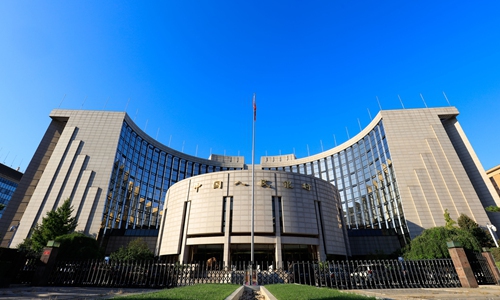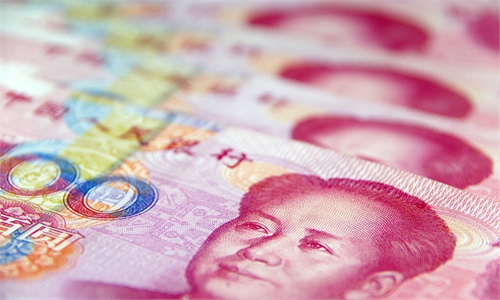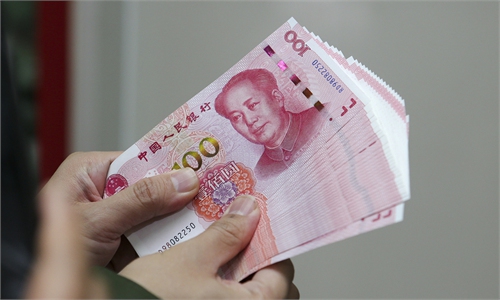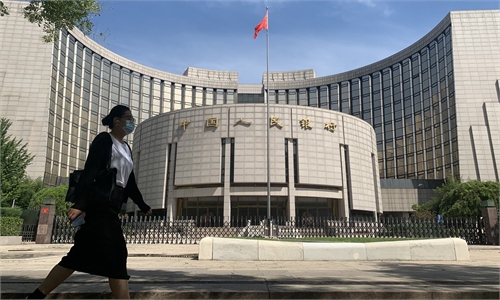
A view of the PBC's headquarters in Beijing Photo: cnsphoto
China kept its benchmark loan rates unchanged in December as expected, as macroeconomic data for November showed a steady recovery in domestic demand.
The one-year loan prime rate (LPR), a market-based benchmark lending rate, was 3.45 percent on Wednesday, unchanged from the previous month. The over-five-year LPR also remained unchanged from the previous reading of 4.2 percent, according to the National Interbank Funding Center.
Macroeconomic data for November showed a steady recovery in domestic demand, with loans to the real economy and total social financing performing better than expected, which has reduced the urgency for a short-term LPR rate cut, Zhou Maohua, a macroeconomist at China Everbright Bank, told the Global Times on Wednesday.
Yuan-denominated loans rose by 21.58 trillion yuan ($3.03 trillion) in the first 11 months of this year, according to the People's Bank of China (PBC), the central bank.
In November alone, yuan-denominated loans rose by 1.09 trillion yuan. M2, a broad measure of money supply that covers cash in circulation and all deposits, climbed 10 percent year-on-year to 291.2 trillion yuan at the end of November.
Most new and outstanding loans in the world's second-largest economy are based on the one-year LPR, while the five-year rate influences the pricing of mortgages.
Policies and measures have been introduced to stabilize the real estate market, with Beijing and Shanghai making major policy adjustments to boost home sales.
These policies will still provide more dividends, which is another reason why benchmark lending rates have remained unchanged, Zhou added.
However, China's economy still faces imbalances and uncertainties in overseas demand, and it is expected that China will increase countercyclical and cross-cycle adjustments, experts said.
The country should strengthen counter-cyclical and cross-cyclical adjustments of macroeconomic policies and continue to implement a proactive fiscal policy and a prudent monetary policy with strengthened innovation and coordination of policy tools, according to the annual Central Economic Work Conference.
The conference stressed efforts to maintain reasonable and sufficient liquidity, and keep the scale of total social financing and money supply in line with targets for economic growth and price levels.
It is expected that the LPR could be further reduced to lower financing costs for the real economy, boost consumption and investment and stimulate the economic recovery, Zhou said.
"Tools such as reserve requirement ratio cuts, interest rate cuts and targeted structural measures are all available in the central bank's toolbox," Zhou said.
The PBC in September announced cuts to the reserve requirement ratio (RRR), the amount of cash that Chinese banks are required to hold as reserves, by 25 basis points. The RRR cut, the second this year, will inject more than 500 billion yuan in medium- and long-term liquidity into the economy by the end of this year.



